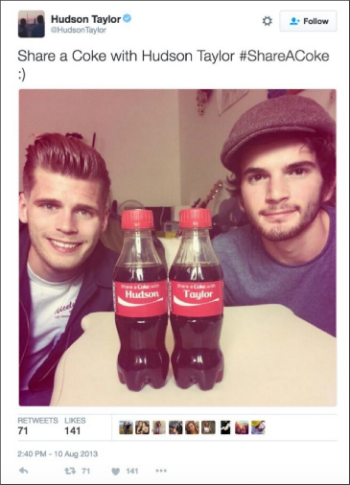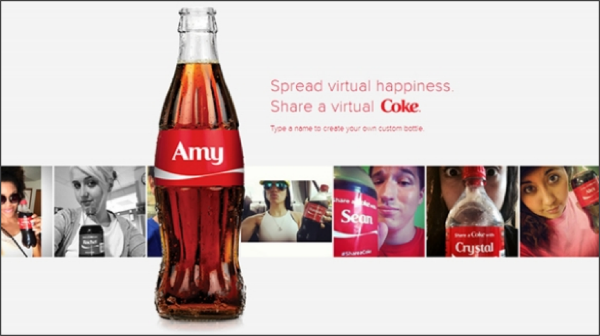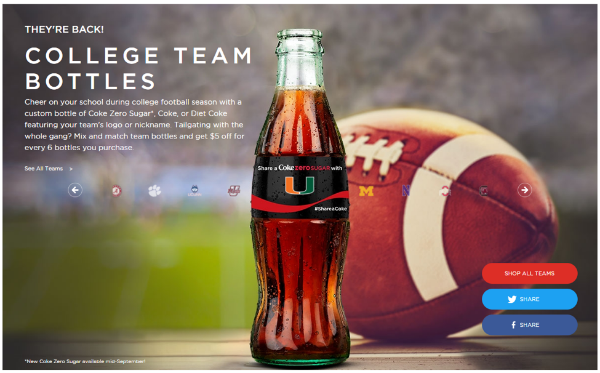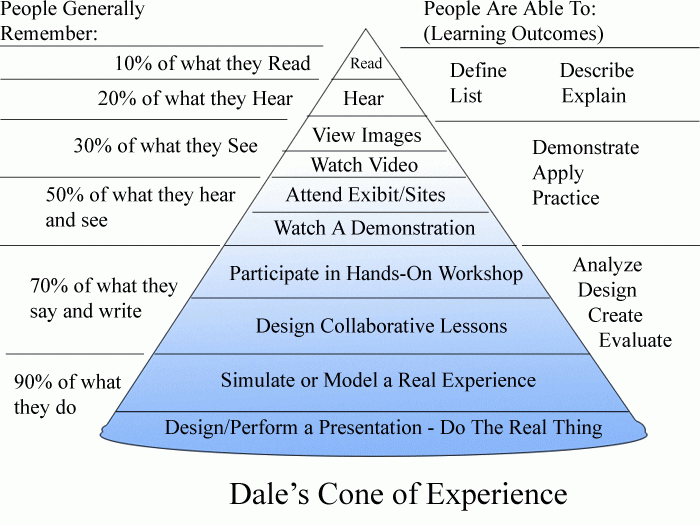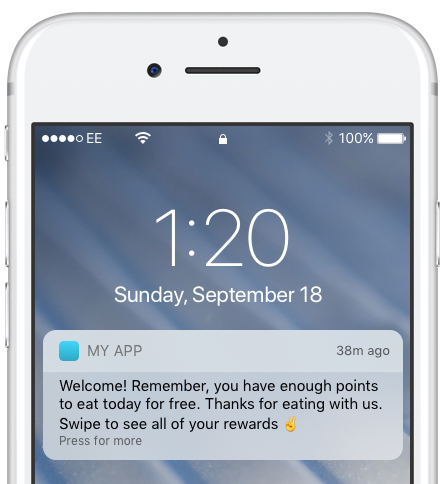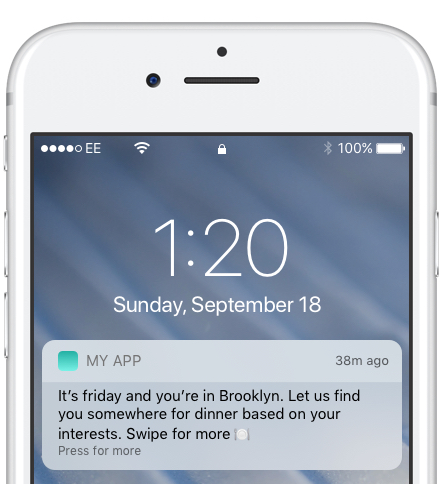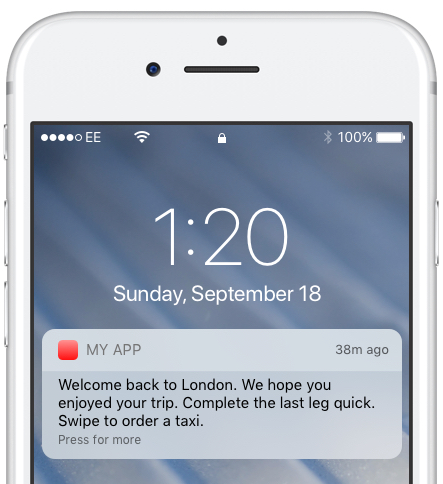
When your sales team goes from 0 to 1 or 1 to 2, sales training is easy.
Your new hire gets to work alongside you and absorb the sales process, see how you handle objections, and where you find leads. Lead by example with your sales training and you’ll have a strong Number Two willing to follow you into battle.
But once you start to scale your startup, you can kiss those carefree days goodbye.
Without fail, you’ll be taken away by other tasks, and the sales training for new team members will be pushed over someone else in the company.
As a sales manager, director, or founder, it’s your job to give your sales team the tools they need to be successful. Without effective sales training processes and techniques in place, you’re basically playing a big game of telephone with your values and strategies. What you taught to your first hires might get passed on correctly. Or it might not.
And the next round of hires? Before you know it, your vision has been completely thrown to the side and your sales department has devolved into a free-for-all.
The right sales training resources let you download all of your knowledge, experience, tricks, and sales strategies into an easily digestible format for new hires. It’s like Neo getting plugged into the Matrix and learning Kung-fu in a matter of seconds.
Sign up for our free sales training course right now!
Now, unfortunately, we can’t expect those kinds of instantaneous kick-ass results. But you can look at proven sales training best practices to help make sure that your team is set up for real success.
Your sales training can cover everything from onboarding new hires to developing their skills, setting up criteria by which they’ll change and adapt with the market. If you can do all this, you’ll be putting together the building blocks for an unstoppable sales machine.
This is no small task. So let’s take this one step at a time, starting with assessing your own team, finding the right methods for delivering your sales training, and then end with the 10 pieces of sales training your team needs to succeed.
Assess your team (or your own) strengths and weaknesses
Whether you’re a team of 1 or 100, your sales team will have its own unique strengths and weaknesses. When you’re starting to put together your sales training process you need to know these inside out.
But what questions should you be asking to really dig into the details?
When CEO consultant Melissa Raffoni spoke with 50 top CEOs of companies with teams of 10 to 1000, she found these eight questions coming up over and over when assessing the quality of a sales team:
-
What’s your value proposition? Sounds simple, but it’s surprising how hard it is for some companies to clearly explain why a customer should choose them over a competitor. And if your sales team can’t do this, they don’t have a chance.
-
Do you have a clear sales process in place? If you do (and you should), is it working as well as it should be? If you put more resources on it, will it grow or break from the pressure? If you need help putting together a sales process, check out our 8-step guide to building a sales process that gets results.
-
Do you think your cost of sales is where it should be? Are your sales sucking your profits dry? What makes you think your costs are acceptable? Are you comparing to an industry standard or mapping to projected sales?
-
What key measures are you using to track sales effectiveness? Are you measuring what needs to be measured? And are those numbers easily accessible on a dashboard to make sure you’re on the right track? You can’t really optimize if you don’t know which lever you want to pull.
-
What are you doing to increase your sales funnel and/or increase your close ratio? Do you have a clear plan for sales growth? Do you know where to go for new leads when the well runs dry? Or experiments you want to take to increase the amount of sales that are closing?
-
Is sales compensation driving the right behaviors? We know compensation is a powerful motivator for sales teams, but is your bonus structure driving the right actions? Is there enough value to make it worthwhile for your sales team to push to hit their sales goals?
-
How are you taking advantage of changes to the market? It’s a changing world out there with new competitors and solutions coming out every month. What are you doing to experiment? Do you have a culture of failing fast or are you slow to take advantage of new sales channels?
-
Do you have the right people? Your team should be your greatest strength. Are they? If not, why? Is it the people, the culture, or the training?
Going deep on these questions will give you a great overview of how your team functions, where you’re killing it, and where things are falling apart. From this information you can start to craft the basics of your sales training.
But asking these questions once and then moving on is a recipe for disaster. Sales training, like all parts of your sales efforts, will constantly evolve as your team and product changes and adapts to the real world. So it’s smart to revisit these questions at least annually to see where you might want to switch things up.
Choose the right format for your sales training
With the raw materials in place from your assessment, you’ll want to go in and look at the different ways you can implement your sales training.
There’s a huge range of options on the table, and no single one is right for every company or every team. Instead, you’ll want to experiment with what is getting the best engagement and results and what works with your team’s structure.
For example, if you’re an early-stage startup with a small sales team, putting together some short courses or conducting in-person workshops can be a great way to build your team’s skills while coming together as a group.
As you scale and grow, it might make sense to bring in an outside consultant or send key members of your sales team off to larger conferences to see what’s coming up and adapt your sales training appropriately.
Let’s take a look at some of the most common formats for delivering sales training:
Courses
No, we’re not talking about sending your sales team back to college. But the typical course format, either in-person or online, is a great way to transfer your sales knowledge to teammates. Also, the course format can allow your salespeople to do their training on a schedule that works for them while allowing you to keep track of their progress.
In-person workshops
Short in-person workshops for your sales team break up the work day and can be a great way to build excitement around your sales training. If you can handle the whole team taking a few hours off it’s worth it to close up shop and bring everyone together.
Hiring outside consultants
When your team gets too big or you can’t deliver effective in-house training, it might be time to look at hiring an outside consultant to come in. It might seem awkward to bring in someone outside of your team, but a good consultant brings tons of value in everything from customized sales tools, a wealth of experience and valuable market information. It can also help you get buy-in with your team faster by bringing in an ‘expert’.
Conferences
Not only are conferences fantastic for networking, but they allow your team to learn from proven leaders and get a pulse on what’s coming up in your market. And remember the Roman philosopher Seneca’s words, “while we teach, we learn.” Make sure to put the added pressure of bringing back value to the company not just to make sure your entire team gets the benefit of the chosen few attending a conference, but to help those who went solidify what they heard.
Internal team testing
Sometimes the best way to learn is to be thrown into the deep end. Conducting an audit of past sales cycles, both successful and unsuccessful, as a team is a great way to train your sales team about the real-world applications of what you’re teaching them.
Databases and wikis
While not necessarily a sales training technique like the others, having self-serve resources available for your team teaches them to always be learning. Set up a wiki or a Trello board with processes and resources for commonly asked questions. And when your team asks you specific things, point them in this direction. It might come across as a bit cold, but you’re essentially training them to help themselves.
Right, so we’ve got all the main channels by which you can deliver sales training to your team, now it’s time to talk about what exactly your sales training will need to cover—so that you can evaluate all of the options on the table for your organization.
The 10 sales training essentials your team needs to succeed
Effective sales training can cover everything from how to create a sales plan to getting over your fears of rejection, staying motivated every day, and more.
The goal here is that each individual component of your sales training helps your team grow and progress, so that nobody feels like they’ve hit a ceiling in their career.
If you need some inspiration on what to include in your own sales training program, or want to make sure you choose the right facilitator, here are 10 essential pieces of sales training you should bring to your team:
1. How to become an effective listener
As the Greek philosopher Epictetus so succinctly explains, “You have two ears and one mouth—you should be using them in that proportion.”
In the rush to explain features and benefits of what you’re selling, it’s easy to talk over your prospect. This is a common mistake many inside sales rookies make. And the problem is, the second someone thinks you’re not listening, you’ve lost them.
Active listening is truly the silent skill of sales. Throughout the sales cycle, prospects will drop hints about what they’re thinking, how they’re feeling, or problems they need solved. Addressing these can make or break your sale. But you’ll miss them if you’re not listening.
Here are a few tips to incorporate into your sales training that’ll help your team team to listen more intently:
-
Practice active listening: This means listening to what your prospect is saying, understanding it, and then responding with a brief summary of what they’re saying. Doing this not only shows that you’re listening and respect what they’re saying, but also will help you zone in on the clues you need to close the sale.
-
Mentally echo what a prospect is saying: One of the barriers to good listening is getting excited and starting to formulate a response before the other person has stopped talking. And of course, as soon as you’re thinking about what they’ve said, you’re now tuning out the rest of what they’re saying. To combat this, try echoing what they’re saying in your head as they talk and wait a few seconds after they finish speaking before responding.
-
Summarize what they’ve said: Once they’re finished speaking, take a moment to summarize and repeat back what they’ve said. For example, “It sounds like you’re happy with your current CRM but would like something a bit more user friendly for new teammates.” This will help clarify any misunderstandings on the spot and is a great technique for getting more insight from your prospect as they’ll usually go one step deeper now that they know you’re listening.
2. Using empathy and training yourself to think like a problem-solver
It’s probably a pretty safe bet that robots aren’t taking your sales job any time soon. That’s because working in sales requires constant problem solving, empathy, and the ability to think fast and act accordingly. To instil these qualities in your team, they need to adopt a problem-solving mentality—which can thankfully be done through proper sales training.
This one starts with empathy, seeing the world through the eyes of your prospect. Listening only goes so far and you should always assume the problem your prospect communicates isn’t necessarily the real issue they need solved. Look at the bigger picture.
Great salespeople go beyond simply solving their customers’ problems and actually find the problems their customers are unaware of.
As Daniel Pink, author of To Sell is Human, said in a recent interview: “If customers know precisely what the problem is, they can find a solution. Where you’re more valuable is when they don’t know what the problem is, or they’re wrong about the problem, and you can identify a problem they don’t realize they have. Or you can look down the road and say ‘Here is a problem you’re going to confront. You’d better get ready for it now’.”
To do this, you need to develop both a problem-solving and problem-finding mentality that, when combined with empathy, will let you find the problems your customers really need solved. Start by asking a few simple questions:
- What are the problems my customer is not yet aware of?
- How can I solve them?
- How can I sell the solution?
Take your time and be creative.
Solving these invisible problems your prospects have is a powerful tool in getting the sale. Reiterate the importance of keeping these questions top of mind throughout your sales training process.
3. Crafting scripts to deal with the most common objections
Knowledge is power. And the best salespeople always have a solid foundation to work from.
Use your sales training to get your team ready for identifying objections that come up time and time again. You can collaboratively craft scripts to help them deal with these issues. Now, the idea of using scripts is a contentious one in the sales community. No one wants to sound like a robot, and this isn’t what you should be advocating for here. Instead, these scripts should help you assay client fears and move onto the real issues more quickly.
Think of it like a basketball team. They spend hours upon hours practicing the basics—dribbling, shooting, defending, rebounding—so that when it comes to game day, they don’t have to think about it and can focus on adapting to the team they’re playing.
In the same way, scripts help your sales team get past common objections quickly and move onto creative ways to close the sale. Not only that, but you’ll have a template you can share across your team and help them level up their sales game quickly.
As part of your sales training, have your team:
- Come up with a list of common objections they hear from prospects (like ‘it’s too expensive’ or ‘we’re happy with our current service’)
- Brainstorm solutions or questions to respond to these objections
- Come up with short scripts based on these answers on how to move past the objections
4. Identifying the red flags of bad customers
Time wasted chasing after the wrong prospects can crush your sales efforts and even your company. Large accounts can sometimes take 6–18 months to close. But that’s only if they do close. And sometimes a bad client can be even worse than a lost sale, wasting your time, asking for refunds and generally speaking poorly about your company.
Your team needs to know what to look out for to make sure they’re going in the right direction—which is where good sales training comes into play. And as someone experienced in selling your product or service, you’ve seen first hand the signs that led to a sale, and the ones that made you get off the phone as quickly as possible.
Here’s a few key red flags you should be using sales training to teach your team what to look out for:
-
Prospects who get nasty during the sales process: When a prospect hasn’t signed on the dotted line, there’s generally no reason for them to not be on their best behavior. So if you see signs of a bad attitude early on, you can be sure they’re not going to get any better once they’ve put money on the table and closed the deal.
-
No respect for boundaries: Call me now. Need to speak right away. Emergency. If you’re getting emails with subjects like this at any time of the day (especially at night or on weekends) from a prospect you’re talking to, they’re probably not worth the trouble.
-
The guarantee-er: Unless you specifically have some form of guarantee, you can’t commit to hitting goals for a prospect. And if they’re trying to get you to say you will, they either don’t trust you or don’t know the complexity of their own problem. Either way, you’re headed for trouble.
-
The quick to close: This might seem counterintuitive, but a prospect willing to jump into bed with you before the first sales call is even over can turn into a nightmare. These impulsive buyers usually don’t have a full understanding of what they’re getting into or what you’re offering, and will after you (even though they’re at fault). Here you might want to slow down the process and suggest another call or spend extra time explaining everything (in writing if you can).
5. The basics of cold emailing
If you’re using cold outreach over email as one of your main sales strategies, you’ll want to have some form of training on the basics of how you connect with prospects over email.
First off, why email? Well, despite doomsayers spouting off about social selling killing email, email is 40X more effective at getting new customers than Facebook and Twitter combined. We put together a collection of 17 sales email tips that work you can check out, but here are the main pieces you should be covering in your training:
How to write subject lines that get opened: It might be just one line, but it’s the one that matters the most. Write like a human, avoid slogans, use lowercase text, and include your recipient's name if you can.
How to write effective email copy: Don’t waste your prospect’s time. Be brief. Give context. And end with a clear call to action. Each sentence needs to show your value props and push your prospect closer to the next step.
Unusual ways to make your emails stand out: We all have overflowing inboxes. So to stand out, try a few tricks like: Adding value in your signature by including recent blog posts, news, or videos; include a personal note or some company humblebrag in the P.S.; and use formatting to your advantage by bolding important information and using bulleted lists.
Email experiments to run: Even the best email templates go stale. Start by deciding what you want to test: open rate or response rate/action. Then, try a few experiments like A/B testing subject lines, changing the ‘From name’, using personalization, or sending at a different time.
How to follow up properly: If your cold prospects aren’t responding, implement this follow-up formula into your sales training process:
-
1 day after your cold email at a different time: Follow-up 1. A modified version of your original email.
-
2 days after you send your second email: Follow-up 2. Restate your call to action only.
-
4-5 days after your third email: Follow-up 3. Say goodbye to the prospect (this is betting on their loss aversion and that they’ll feel compelled to respond).
6. The basics of cold calling
If your salespeople are picking up the phone, you’ll for sure want to be training them on what to do when their prospect answers.
Your cold calling strategy should start with a funnel that looks something like this:
- Dial phone numbers
- Reach prospects
- Qualify prospects
- Demo the prospects
- Close the deal
To help your team get the most success from this funnel, you’ll want to provide them with some simple tools and training around lead sourcing, sales call scripts, and how to handle objections.
Remember to incorporate teaching your team to keep it simple and focus on one step at a time throughout your sales training.
Can you reach one person? Qualify that person? Demo a prospect? Close a deal? The training should focus on pushing through and getting each prospect to the next step. So don’t worry if the conversion numbers are bad to start.
7. How to clearly articulate value to prospects
Nothing kills a sale faster then not being able to tell someone why they need what you’re selling. People buy results, not just products or services.
Your salespeople need to know how to clearly articulate the value that your product or service will provide for the prospect. They need to be educators and storytellers, explaining why what you’re selling is so great and then getting the prospect to imagine themselves in a better life because of you.
Start by going through your customer profiles. Why are they good prospects for what you’re selling? How can you show them the value you’re providing? Do you have case studies or testimonials you can use?
Role play and get your team to practice articulating the value of your product until they can do it without even thinking.
8. Dealing with fear in cold sales
If you’re dealing with sales training for new or less experienced salespeople, you’ll want to train them not only on how to sell, but how to feel good about doing it.
Calling up or emailing strangers and asking them to buy what you’re selling isn’t something we normally do. And fear is only natural when you’re put into an unfamiliar place. Taking the time to train your team about how to handle that fear will make them more confident, friendly, and ultimately happier.
Start by looking at all the places in your sales process where your team might be feeling anxiety or fear and how to address it:
-
Fear of rejection: When cold calling or emailing, it’s natural to be afraid of rejection. But hearing ‘no’ is no small part of selling. Don’t ignore or squash this fear. Instead, embrace it, verbalize it, and instead of trying to avoid failure, have your salesperson aim for failure and get motivated to push past the rejections. Give them the liberty to fail spectacularly a few times and get comfortable in that space. Those few lost leads are worth it in the long run.
-
Fear of presentation: If you’re scared of getting in front of a group and pitching solutions, you might think you’re not cut out for sales. But getting over this fear of performance isn’t as hard as you might think. Try coming up with a hard script so that there’s no room for error. It might come across as robotic the first few times, but once your salesperson feels comfortable their fear will disappear and the presentation will loosen up.
-
Fear of asking for the sale: Some salespeople are great at small talk, but can’t bring themselves to ask for the sale. This goes back to the fear of rejection, but if you’ve come this far you don’t want to just toss away the sale. Instead, give them a few textbook techniques for closing the sale. Once they feel comfortable with the basics, upgrade to more advanced tricks.
9. How, when, and the frequency of following-up
Most people might assume there’s no interest in what they’re selling if they don’t get a response. But the follow-up is your key to higher conversion rates, and without it you’re not likely to close many deals in the long run.
Steli, the CEO of Close.io here, follows a simple follow-up philosophy: Reach out as many times as necessary until you get a response. If a prospect says they’re busy for two weeks, he sets a reminder for 14 days.
Now, your own follow-up philosophy will come from your values and sales process, but the key here is that you need to have something your team can follow. Decide what frequency you’re going to follow up, how you’re going to track your messages, and which medium you’re going to use. Then, teach your team to use their judgement and experiment.
10. Ways to ask for the close
One of the most important pieces of sales training your team needs is how to close the deal.
Without providing guidelines and processes for asking for the close, you’re basically giving your team liberty to ask whenever they want. And unfortunately, too many salespeople wait until that nonexistent ‘perfect moment’ to ask.
Here are a couple techniques you can try adding to your sales training:
The virtual close: As soon as you’ve qualified your lead and given them your pitch, ask for the sale. At this point, you basically know they’re going to say no. So follow up by asking, "What’s the process we need to go through in order to get you ready to buy?" With this simple question, you’re getting them to draw you a roadmap to the sale you’ll eventually get.
Take the sale away: When objections arrive at the 11th hour, it’s easy to get desperate and make promises you can’t keep. Instead, teach your salespeople to "take the sale away" by being decisive on pricing, emphasizing that you’re building a long-term relationship, and imposing a break in the conversation. By using this technique, you’re not only pushing people to close, but showing them that you value the service or product you’re selling.
The learning never stops
Sales training never really ends.
There are always new techniques, better scripts, new objections to overcome, new issues to address, another competitor entering the market that you and your team will need to learn how to combat.
The best salespeople have a drive to learn and be the best, and your sales training will help them get there. Invest in it early on and you’ll have a team that can’t be beat.
Want to see how we do sales training? Sign up for our free sales training email course with video lessons and more!
Sign up for the sales training course
































